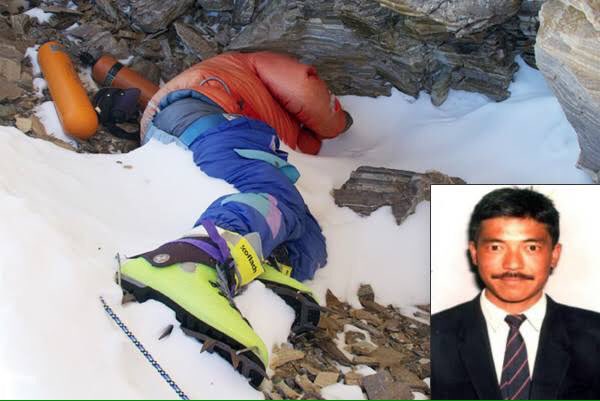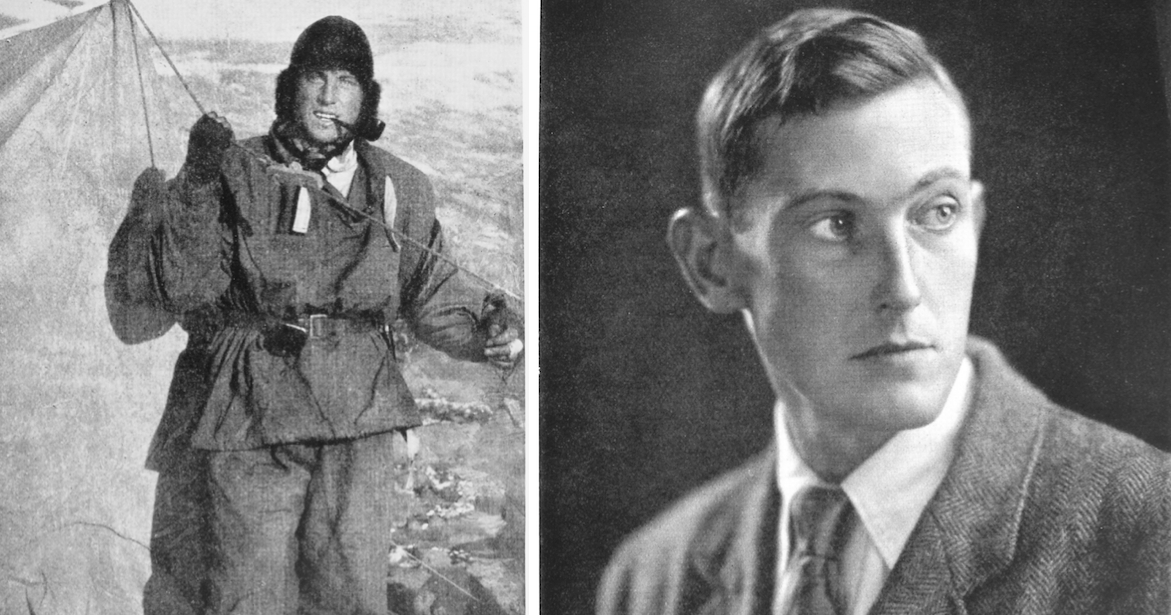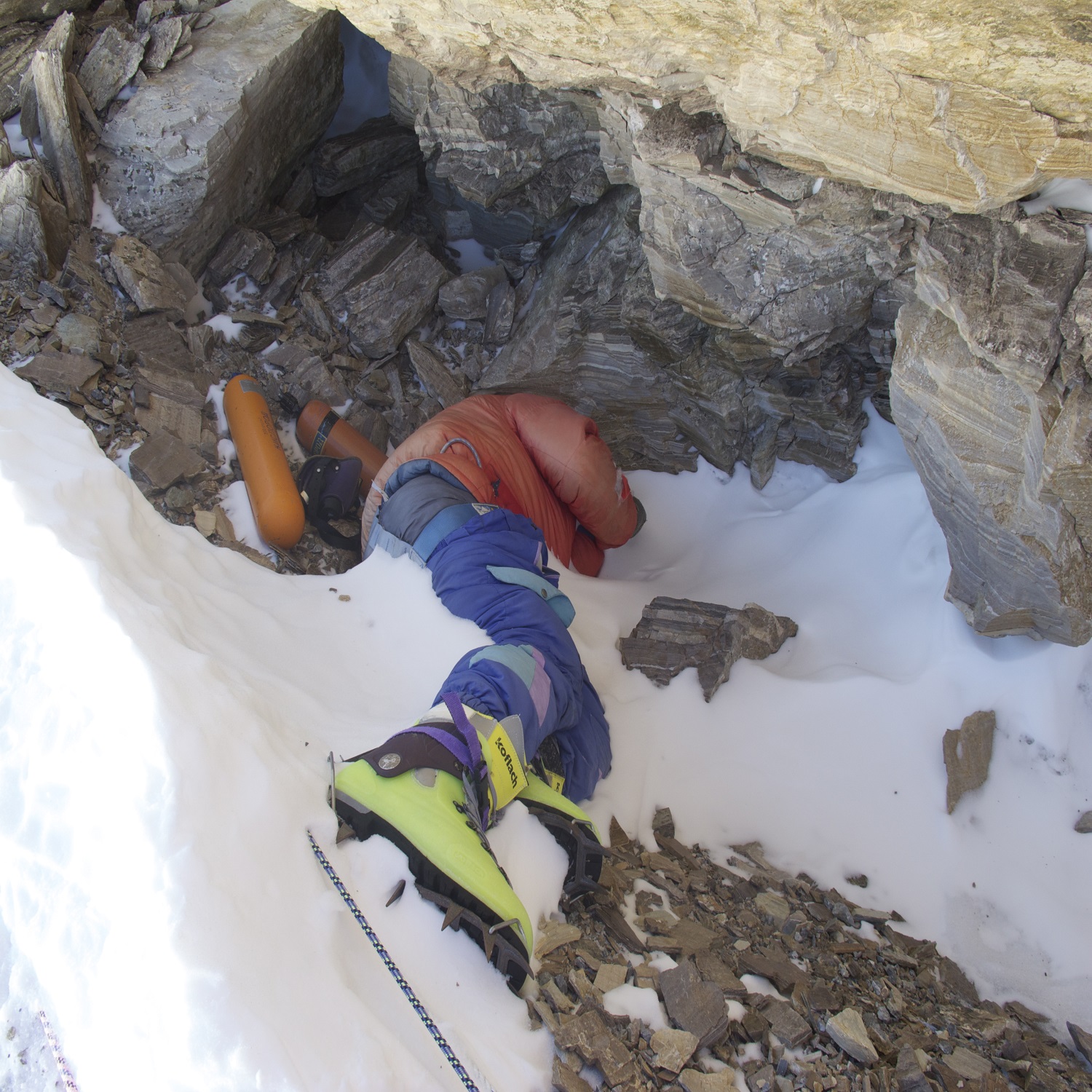Dead Bodies on Mount Everest
Mount Everest is the highest mountain in the world, standing at 8,848 meters (29,029 feet) tall. Climbing is a feat that many mountaineers aspire to. Still, it is also a dangerous undertaking that requires careful preparation, physical and mental endurance, and the ability to deal with harsh conditions at high altitudes.
Unfortunately, over the years, many climbers have lost their lives attempting to reach the summit of Mount Everest. More than 200 dead bodies are estimated to remain on the mountain, scattered along the various routes to the summit.
Most of these bodies are located in the “Death Zone,” which is the area above 8,000 meters (26,247 feet) where the air is so thin that the human body cannot function properly without supplemental oxygen. The extreme cold, high winds, and low oxygen levels make it difficult for rescue missions to retrieve the bodies, and many of them remain on the mountain, serving as a grim reminder of the dangers of climbing Everest.
There are ongoing efforts to remove some of the bodies from the mountain, both to respect the deceased and to keep the area clean. However, this is a challenging task that requires plenty of resources, and many of the bodies will likely remain on the mountain for years to come.
Mount Everest is the highest mountain in the world, standing tall at 29,032 feet (8,849 meters) above sea level. Over the years, it has been a popular destination for mountaineers and adventurers seeking to conquer its peak. While the climb to the top of Everest is a challenging feat, it is also a dangerous one. The harsh weather conditions, high altitude, and rugged terrain make the ascent a risky proposition, and many climbers have lost their lives attempting to reach the summit. In this article, we will explore the number of dead bodies on Mount Everest and the reasons behind these fatalities.
How many dead bodies are on mount Everest?
It is difficult to determine an exact figure for the number of dead bodies on Mount Everest. However, it is estimated that there are around 200 dead bodies on the mountain, some of which have been there for decades. The bodies are scattered throughout the mountain, and some are even visible from the climbing route. These bodies are often referred to as “the dead on Everest” and serve as a stark reminder of the risks involved in climbing the mountain.
The first recorded death on Mount Everest occurred in 1922 when seven porters were killed in an avalanche. Since then, there have been many fatalities on the mountain, with the number increasing significantly in recent years. According to the Himalayan Database, which tracks mountaineering expeditions in the region, there have been 297 deaths on Everest between 1921 and 2021. Of these, 177 deaths occurred during the period between 2000 and 2021, highlighting the growing danger of climbing the mountain.
The causes of death on Mount Everest vary, but the most common ones include altitude sickness, falls, avalanches, and exposure to extreme weather conditions. Altitude sickness is the most prevalent cause of death on Everest, with climbers succumbing to the effects of low oxygen levels at high altitudes. The symptoms of altitude sickness include nausea, headaches, and dizziness, and in severe cases, it can lead to brain swelling and pulmonary edema, which can be fatal.
Falls are also a significant cause of death on Mount Everest, with climbers losing their footing and falling from high altitudes. The rocky terrain and unpredictable weather conditions make falls a constant threat, and many climbers have lost their lives due to this cause. Avalanches are another danger on the mountain, and they can be triggered by natural causes or by the movements of climbers. The weight of a single climber or a group of climbers can be enough to trigger an avalanche, which can bury them under tons of snow and ice.

Exposure to extreme weather conditions is also a major cause of death on Mount Everest. The mountain is notorious for its unpredictable weather patterns, with sudden storms and blizzards posing a constant threat to climbers. Temperatures can drop below minus 20 degrees Celsius, and winds can reach speeds of up to 100 miles per hour, making it impossible to climb or descend safely.
While the risks of climbing Mount Everest are well-known, many climbers are still drawn to the mountain, seeking to achieve the ultimate mountaineering challenge. However, the increasing number of deaths on the mountain has raised concerns about the ethics of climbing it. Some have argued that climbing Mount Everest has become a commercialized venture, with inexperienced climbers paying large sums of money to join expeditions that put them at risk. Others have called for stricter regulations and safety measures to be put in place to reduce the number of fatalities on the mountain.
In addition to the risks involved in climbing Mount Everest, the dead bodies on the mountain have also raised ethical and moral questions. The bodies of the climbers who have died on the mountain are often left on the mountain due to the difficulty and danger involved in retrieving them.
Famous Dead bodies of Mount Everest
Mount Everest is the highest mountain in the world and is known for its treacherous terrain, unpredictable weather, and stunning views. Over the years, it has attracted thousands of climbers who have sought to conquer its peak. However, the mountain is also notorious for the number of deaths that occur on its slopes. Many climbers who have died on Everest have been left there, and their bodies have become a macabre attraction for those who climb the mountain. In this article, we will explore some of the most famous dead bodies on Mount Everest.
Sergei and Francys Arsentiev
Sergei and Francys Arsentiev were American mountaineers who attempted to climb Mount Everest without supplemental oxygen in May 1998. They were part of a team of climbers led by Russian mountaineer Andrey Selivanov.
The Arsentievs encountered difficulties on their way to the summit, and Sergei eventually became incapacitated due to high altitude sickness. Francys continued to climb, hoping to reach the summit and then descend with the help of a rescue team. However, she also became stranded and was unable to descend.
Several attempts were made to rescue the Arsentievs, but they were unsuccessful due to the harsh conditions and the danger to the rescuers. Eventually, the couple died on the mountain, with Francys passing away first and Sergei dying a few hours later.

Their bodies remained on the mountain for several years, becoming known as the “Green Boots” due to the bright green climbing boots that Sergei was wearing. In 2007, an expedition team removed Sergei’s body, but Francys’ body remained on the mountain.
The tragedy of the Arsentievs highlighted the dangers of climbing Mount Everest, particularly when attempting to do so without supplemental oxygen. It also brought attention to the issue of ethical responsibility in mountaineering, as several climbers had passed the couple without offering assistance or attempting a rescue.
Green Boots and George Mallory
Green Boots and George Mallory are both associated with Mount Everest and are well-known figures in the history of mountaineering.

Green Boots refers to a climber who died on Mount Everest and whose body was left on the mountain for many years. The climber was later identified as Tsewang Paljor, an Indian climber who died during the 1996 Mount Everest disaster. His body remained on the mountain and became a macabre landmark for climbers attempting to reach the summit. The body was known as “Green Boots” because of the green climbing boots that Tsewang Paljor was wearing. In 2014, the body was removed from the mountain and given a proper burial.
George Mallory was a British mountaineer who is famously associated with Mount Everest. He made several attempts to reach the summit of the mountain in the 1920s, but was unsuccessful. Mallory is best known for his response to a question about why he wanted to climb Mount Everest, which he reportedly answered with the words, “Because it’s there.” Mallory’s fate on the mountain remains a mystery. He disappeared during a 1924 expedition, and his body was not discovered until 1999. It is not known whether Mallory reached the summit of the mountain before he died, but his determination and bravery have inspired generations of mountaineers.

David Sharp
David Sharp was a British mountaineer who died on Mount Everest in 2006. Sharp was attempting to climb the mountain solo and without supplemental oxygen, a challenging feat that only a small percentage of climbers attempt.
Sharp encountered difficulties on his way to the summit and became stranded near the Second Step, a steep and dangerous section of the climb. Several climbers passed by Sharp, but none stopped to offer assistance, and he was left alone on the mountain.
When a group of climbers finally reached Sharp, he was in critical condition, suffering from frostbite and other injuries. Despite their efforts to help him, Sharp died on the mountain, becoming the subject of controversy and criticism in the mountaineering community.
The incident raised questions about the ethics of mountaineering, particularly the responsibility of climbers to help others in distress. Some argued that the high altitude and extreme conditions of Mount Everest make it difficult to offer effective assistance, while others criticized the climbers who passed by Sharp for failing to help a fellow human being in need.
The tragedy of David Sharp served as a reminder of the dangers of climbing Mount Everest and the importance of safety and ethics in mountaineering. It also sparked a debate about the responsibility of climbers to help others in distress and the need for better safety measures on the mountain.
Andrew Irvine has never been found.
Andrew “Sandy” Irvine was a British mountaineer who, along with George Mallory, attempted to climb Mount Everest in 1924. Mallory and Irvine’s attempt to reach the summit of the mountain remains one of the greatest mysteries in the history of mountaineering, as the two climbers were last seen just a few hundred meters from the summit.
The fate of Andrew Irvine is unknown, as his body has never been found. Some mountaineers and historians believe that Irvine and Mallory may have reached the summit before they perished on the descent, which would make them the first climbers to reach the top of Mount Everest. However, there is no definitive evidence to support this theory.

In 1999, an expedition team discovered the body of George Mallory on the mountain, which helped to shed some light on the fate of the two climbers. Mallory’s body showed signs of a severe fall, leading many to believe that the two climbers fell to their deaths while attempting to descend from the summit.
Despite many expeditions to the mountain and advances in technology, the location of Andrew Irvine’s body and the mystery surrounding his and Mallory’s climb and fate on Mount Everest continues to fascinate and intrigue climbers and historians alike.

What are the oldest dead bodies on Everest?
It is difficult to determine the exact age of the oldest dead bodies on Mount Everest, as many bodies have been left on the mountain for decades and may have become buried or partially covered by snow and ice. However, one of the oldest known bodies on the mountain is that of Francys Arsentiev, an American climber who died in 1998.
While Arsentiev’s body is not the oldest on the mountain, it is notable for its location. Arsentiev died at an elevation of 28,000 feet (8,534 meters), which makes her body one of the highest on the mountain. Her body is located on the northeast ridge, and it is often referred to as “Sleeping Beauty” due to its peaceful appearance.
Other bodies on the mountain that are believed to be from earlier expeditions include those of George Mallory and Andrew Irvine, who disappeared on the mountain in 1924. Their bodies were not found until 1999, and while they were remarkably well-preserved, it is difficult to determine their exact age.
Additionally, there have been reports of bodies on the mountain that are believed to be from earlier expeditions, but these reports are often difficult to verify. It is likely that there are many bodies on the mountain that have never been found or identified, and they may remain buried under the snow and ice for years to come.
sleeping beauty mount everest dead bodies
Francys Arsentiev, an American climber who died on Mount Everest in 1998, is often referred to as “Sleeping Beauty” due to the peaceful appearance of her body. Arsentiev and her husband, Sergei, were attempting to climb the mountain without the aid of supplemental oxygen when they became separated. Arsentiev continued to climb, but she became stranded near the summit and was unable to descend.
A rescue team attempted to reach Arsentiev, but they were unable to reach her in time. She died of exposure, and her body was left on the mountain. Arsentiev’s body remained on the mountain for several years, and it was eventually covered by snow and ice. In 2004, climbers discovered her body while attempting to summit the mountain.
Despite being exposed to the elements for several years, Arsentiev’s body was remarkably well-preserved. She was lying on her back with her arms crossed over her chest, and her face was turned to the side. Her body was covered in frost and snow, which gave her the appearance of being asleep.
Arsentiev’s body has become a macabre attraction for climbers who attempt to summit the mountain. Her body is visible from the climbing route, and many climbers use it as a landmark on their way to the summit. However, some climbers have expressed concern about the increasing number of bodies on the mountain, and they have called for more stringent regulations to prevent climbers from leaving their dead behind.
Mount Everest dead bodies markers
Markers are used on Mount Everest to identify the location of dead bodies and help climbers navigate the mountain. While the use of markers is a controversial topic among climbers, they are generally seen as a necessary tool for safety and navigation on the mountain.
Markers can take many forms, including flags, signs, and cairns. They are typically placed near the location of a dead body, and they may also include information about the climber who died, such as their name, nationality, and the date of their death.
Some climbers argue that markers are a necessary tool for navigating the mountain, especially in areas where there is little to no visibility. They also argue that markers can help prevent climbers from inadvertently disturbing a dead body or stepping on dangerous terrain.
However, other climbers believe that markers are a disrespectful and unsightly addition to the mountain. They argue that the use of markers can detract from the natural beauty of the mountain and that they can be a reminder of the dangers of mountaineering.
Despite the controversy, markers are often used on Mount Everest to identify the location of dead bodies. While some climbers may choose to remove markers, others may choose to leave them in place as a sign of respect for the climbers who have lost their lives on the mountain.
It is important to note that while markers can be helpful for navigation and safety, they should not be relied upon as the sole means of navigating the mountain. Climbers should also be properly trained and equipped for the climb, and they should be aware of the risks involved in mountaineering. They should also be respectful of the mountain and the climbers who have lost their lives on its slopes.










